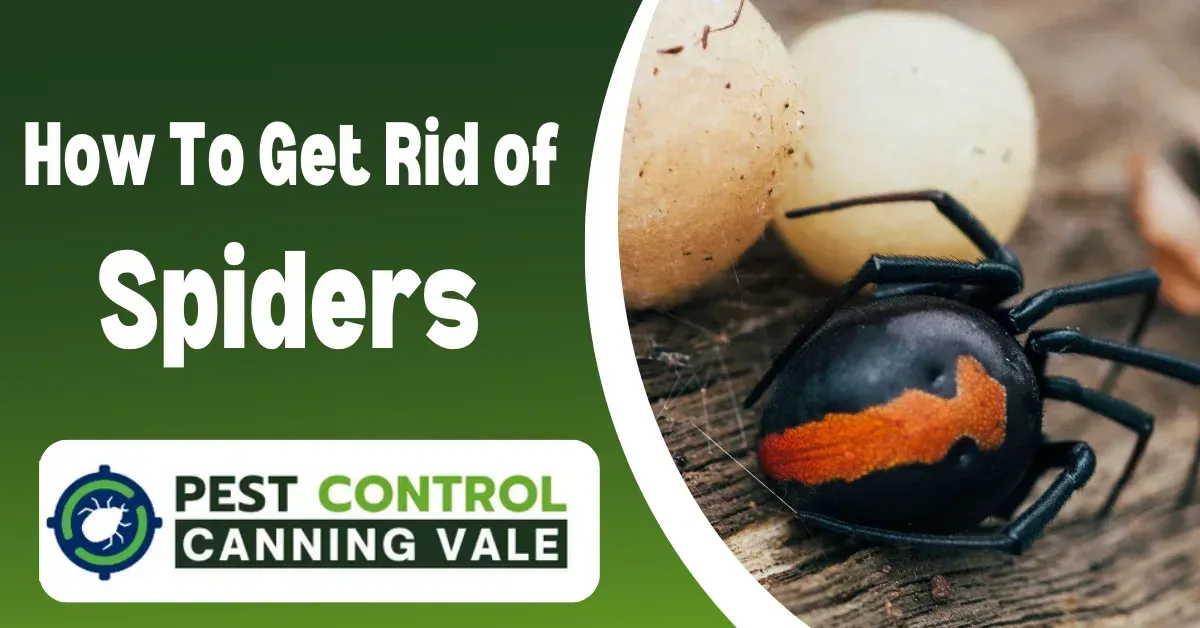PEST CONTROL CANNING VALE, THORNLIE, PARKWOOD, HARRISDALE, PIARA WATERS, WILLETTON AND SURROUNDING AREAS FOR OVER 10YRS
PEST CONTROL CANNING VALE, THORNLIE, PARKWOOD, HARRISDALE, PIARA WATERS, WILLETTON AND SURROUNDING AREAS FOR OVER 10YRS
Blogs

How to Get Rid of Spiders
The Ultimate Guide How to Get Rid of Spiders
It looks like you might be dealing with some eight-legged visitors in your home, and though they can be helpful with controlling other pests, I completely understand that they might not be the most welcome guests. Don't worry, I'm here to walk you through a comprehensive guide on how to manage and potentially rid your home of spiders. Whether you're into DIY solutions or thinking about calling in the pros, this guide will give you all the info you need to tackle those creepy crawlies confidently.
Understanding Our Arachnid Friends: What Are Spiders?
Spiders are part of the arachnid family, just like scorpions, ticks, and mites. These little creatures are quite fascinating! They have eight legs, multiple eyes, and the cool ability to produce silk. While they play a vital role in nature by keeping insect populations in check, having them as housemates can be a bit too much for some of us.
Meet the Usual Household Suspects:
There are a few common types of spiders that might pop up around your home:
House Spiders (Tegenaria domestica): These are the ones you'll find spinning webs in the quieter parts of your home like the attic or basement. They’re pretty harmless but can be a nuisance with their webbing.
Cellar Spiders (Pholcidae): Often called daddy longlegs, these spiders have long, skinny legs and prefer to hang out in basements or crawl spaces. They’re harmless to humans.
Black Widow Spiders (Latrodectus spp.): Easily recognizable by their shiny black bodies and red hourglass markings. These are venomous and can be dangerous, so it’s best to keep your distance and call in professionals if you spot them.
Brown Recluse Spiders (Loxosceles reclusa): These brown spiders have a unique violin-shaped marking on their back. They are also venomous and best handled by professionals.
Wolf Spiders (Lycosidae): These large, hairy spiders don’t create webs as they are active hunters. Usually found in gardens but they might wander into basements and garages.
How to Tell if You Have a Spider Infestation:
Catching a spider infestation early can make management much easier. Here’s what to look out for:
Spider Webs: These are the most obvious signs. Check corners, ceilings, and other low-traffic areas.
Sightings: Spotting several spiders around your home, especially in dark and secluded areas.
Egg Sacs: These look like small, white, silky balls and can often be found in webs or hidden nooks.
DIY Spider Control Methods:
If you’re dealing with a mild case, here are some friendly DIY methods you might consider:
Keep it Clean: Reduce clutter and keep your home tidy, especially in storage areas. Regular vacuuming can help remove spiders, webs, and egg sacs.
Seal the Deal: Make sure to seal up cracks and gaps around windows, doors, and the foundation to keep spiders from coming inside.
Natural Repellents: Essential oils like peppermint, lavender, and eucalyptus can deter spiders. Mix a few drops with water and spray around entry points. Vinegar and citrus peels are also great natural deterrents.
Set Some Traps: Sticky traps and glue boards can be effective in capturing wandering spiders.
When to Call the Professionals:
For more severe infestations, especially with venomous spiders, professional pest control is the way to go. They’ll conduct a thorough inspection, use specialized treatments, and help with prevention tips to keep spiders from returning.
Prevent Future Infestations:
Prevention is key to keeping your home spider-free. Regular home maintenance like sealing up cracks, managing yard vegetation, and keeping areas clean and dry will make your home less inviting to spiders.
Remember, while spiders do play a beneficial role in the ecosystem, it’s perfectly okay to want to keep them out of your personal space. With these tips and tricks, you’ll be well on your way to managing those unwelcome house guests. Stay safe and spider-free!
Frequently Asked Questions (FAQs)
1. How do spiders enter homes?
Spiders can enter homes through cracks, gaps, and openings in walls, doors, and windows. They can also be brought in on infested items, such as plants, firewood, or boxes.
2. Are spiders harmful to humans?
While most spiders are harmless and do not pose a threat to humans, some species, such as black widows and brown recluses, are venomous and can cause serious health issues if bitten. It is essential to identify and address spider infestations promptly.
3. Can spiders live in dry environments?
Spiders prefer dark, damp environments but can also survive in dry conditions if they have access to food and shelter. Reducing humidity levels and eliminating clutter can help prevent spider infestations.
4. How long does it take to get rid of spiders?
The time required to eliminate spiders depends on the extent of the infestation and the treatment method used. Professional treatments often provide faster and more effective results, typically within a few weeks.
Don't let spiders ruin your peace of mind. Call Canning Vale pest control Today (08) 6373 2514
Canning Vale Pest Control
Nicholson Ct, Canning Vale WA 6155
(08) 6373 2514
Open 24 hours

